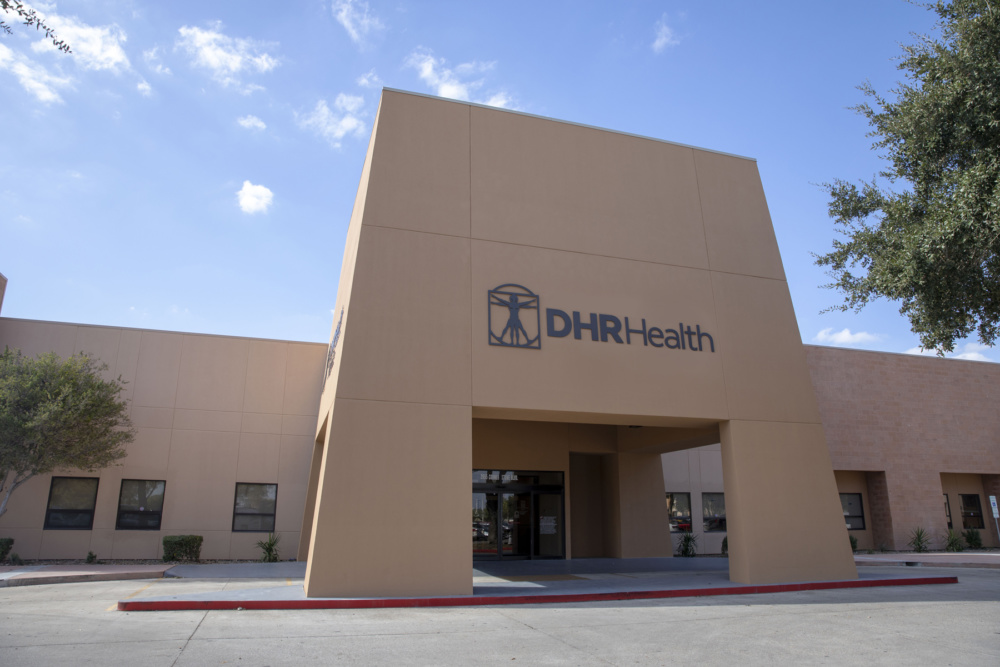Within the last five years, healthcare has gone from being dominantly analog, paper and machine-based to digital, said Robert Wachter, the chief of Hospital Medicine and Medical Service at the University of California at San Francisco School of Medicine.
 “In 2010, 15.2 percent of hospitals were digitized,” he said during a presentation held recently at Trinity University entitled “Health Care 2016 and Beyond” and organized by the Trinity Department of Health Care Administration and the Centene Corporation.
“In 2010, 15.2 percent of hospitals were digitized,” he said during a presentation held recently at Trinity University entitled “Health Care 2016 and Beyond” and organized by the Trinity Department of Health Care Administration and the Centene Corporation.
As a self-proclaimed proponent of technology, blogging, and tweeting and the author of the new book, “The Digital Doctor,” Wachter retraced a 15-year history of studying the effects of digital technology on the healthcare industry, which included errors made in patient safety.
As the former member of a Google Health Advisory Board aimed at digitizing healthcare, he spoke about how digitization will eventually enable vendors of electronic medical records to join with hospitals to create a substrate of electronic health records to better care for patients.
 Many healthcare proponents say hospitals aren’t being digitized quickly enough to keep up with the flow of data being generated by the new technology, however.
Many healthcare proponents say hospitals aren’t being digitized quickly enough to keep up with the flow of data being generated by the new technology, however.
“We’re looking at the fact that genomic data will be a bigger data set in 10 years than YouTube, astronomy and Twitter all combined,” said Kevin Haar, chairman of the board and president of Appistry Inc., which is involved in bridging the gap between genetic data and health.
Quicker collection and analysis of medical data means that customers are demanding healthcare beyond traditional settings.
“We want better care, healthier communities and smarter spending” –Helen Burstin, a physician and general internist and the chief scientific officer at the National Quality Forum
Jason Hwang, co-founder and chief medical officer of Icebreaker Health and LemonAid Health, said that decentralizing healthcare would play a key role in the future.

“Are there things going on in the outpatient clinic that could be put in the doctor’s office, pharmacy, or grocery, store, or better yet, the patient’s home or mobile device? If we want to make it as accessible as possible, we want to decentralize it in that direction,” he said.
Another key to the future of the industry is connectivity.
“We want better care, healthier communities, and smarter spending,” said Helen Burstin, a physician and general internist and the chief scientific officer at the National Quality Forum.
“If someone comes in with a hip fracture, for example, and winds up in the emergency department, it’s no longer enough to look at what happens in the emergency room, but across a longitudinal aspect,” she said. “What are the clinical outcomes and other outcomes, and what are the costs?”
“The population we serve from birth to the end of life is where we are on the spectrum,” said Doug Hawthorne, chair of the Trinity Board of Trustees and CEO Emeritus of Texas Health Resources.
“It sets us up to look at not just sick care, which has been the focus for hospitals and health systems, but how to care for the individual who shows up at our doorstep, either through the front door we now call the emergency center or by other means.”
 Digitization is changing the way that people pay for healthcare, too.
Digitization is changing the way that people pay for healthcare, too.
Hospitals, facing a readmission penalty program, are looking to bundled payments and other alternatives that are ushering in a new wave of personalized medicine through new software and data analytics, Burstin noted.
“Hospitals and post-acute care providers are going to have to provide care in ways they never have,” she said.
Despite these recent changes, medical care is still squarely rooted and anchored in central locations, said Alan Weil, editor-in-chief of Health Affairs.
The use of digital technology may spur a different way of thinking among key players in the industry – a move away from randomized trials to massive data collection, analysis and hypothesis generation for more tailored, individual cases, Weil said.
Ahmed Ghouri, founder and CEO of Interpreta, a company that uses real-time interpretations of clinical data, consumer data, and genomics data at the nucleotide level in a model designed to monitor a person’s healthcare throughout their lifetime, described how the technology could be used to select the right treatments for patients.
“The population we serve from birth to the end of life is where we are on the spectrum” -Doug Hawthorne, chair of the Trinity Board of Trustees and CEO Emeritus of Texas Health Resources
“You may have an abnormal lab result and you want to make sure it’s not ignored by the health system for a period of a week,” he said. “We’re creating a personalized GPS for the patient that is like an angel for that patient.”
 In the future, the company may determine which prescriptions are safe to prescribe a patient based on their genome, Ghouri said.
In the future, the company may determine which prescriptions are safe to prescribe a patient based on their genome, Ghouri said.
Another company, Xenex Disinfection Services, LLC, has developed a germ-zapping robot to be used in hospitals to zap the Clostridium difficile bacteria.
“The device is ideal for hospitals because it can be incorporated into a routine operation,” said Xenex CEO Morris Miller.
What role will digital technology play in the relationship between not only doctors and patients, but less traditional healthcare providers?
Ghouri called for more cross-disciplinary programs from universities.
“Historically, when there are really profound breakthroughs, it’s usually from people who are outside the domain,” he said.
“I think we need to strongly encourage the collaboration of non-clinical workers with physicians to help foster these out-of-box innovations at the organizational and university level,” Ghouri said.
All photos by B. Kay Richter for Texas MD Monthly.





Recent Comments